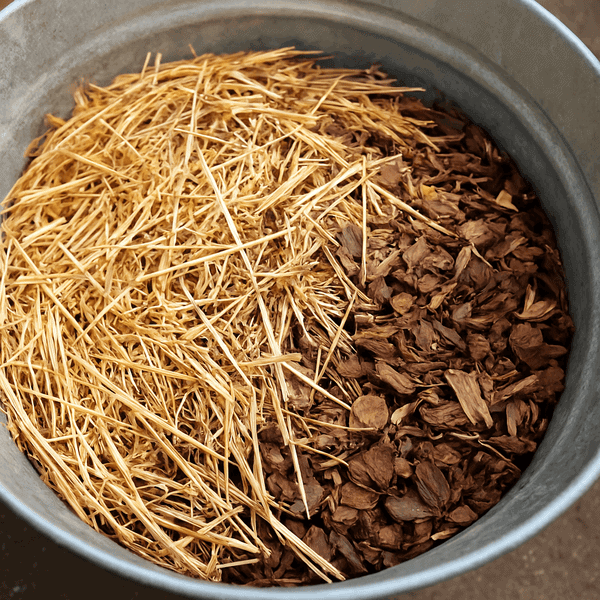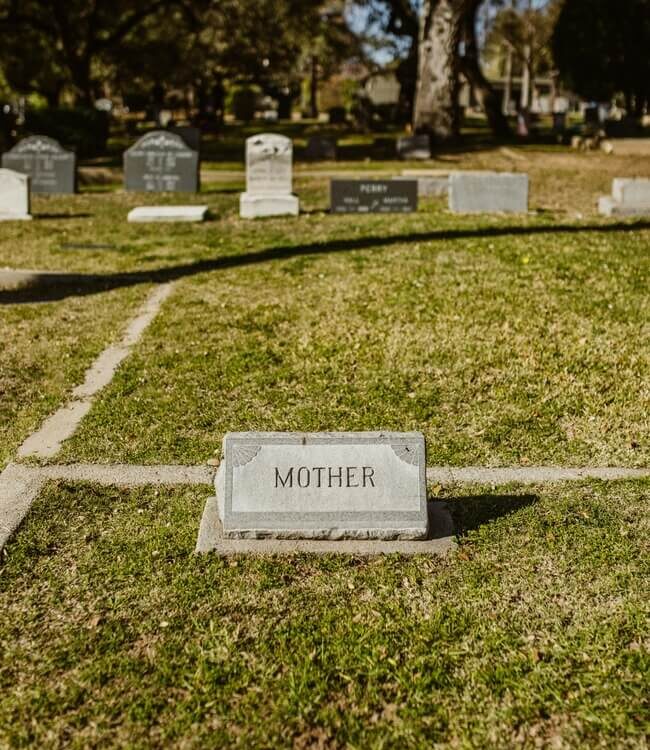Types of Funeral Services: Green Funeral Services

Types of Funeral Services: Memorial Services
April 11, 2025
Types of Funeral Services: Home Funeral Services
April 22, 2025Green funeral services offer a green alternative to traditional funerals. They are interested in reducing the environmental impact of end-of-life care. As people get more environmentally aware, more people are seeking out ecologically friendly choices to honor their deceased loved ones. Green funerals provide an opportunity to incorporate final wishes into alignment with environmental considerations.
One of the most significant aspects of green funerals is that they focus on avoiding pollution and conserving natural resources. Green services typically entail activities like natural burials, biodegradable coffins, and conservation-based memorialization. Having a green funeral is all about prioritizing sustainability while still honoring a deceased individual’s life and legacy.
Understanding Natural Burial
Natural burial is the foundation of the majority of green funeral practice. Unlike traditional burial, natural burial does not use chemical embalming, metal coffins, and concrete vaults. Natural decomposition is facilitated by taking the body back into nature in an uncomplicated, biodegradable container.
Focus on harmony and simplicity with nature makes natural burials a preference for people who are concerned about conservation. Natural burial is preferred by families because it keeps land, doesn’t release carbon, and leaves no lasting impact of non-biodegradable elements.
Principles of Natural Burial
Natural burials follow a few core principles:
- No embalming fluids: Bodies are not preserved with chemicals, reducing soil contamination.
- Biodegradable materials: Caskets or shrouds are made from natural fibers like bamboo, wicker, or cotton.
- No vaults or liners: The body is placed directly in the ground, allowing for direct contact with the soil.
Environmental Benefits
Natural burial not only lessens the environmental footprint but is also ecologically friendly to local ecosystems. Natural burial encourages soil fertility, minimizes carbon imprints, and maintains natural habitats. Through natural burial, families celebrate their deceased in a soft, nature-friendly manner while preserving land and biodiversity.
Biodegradable Caskets and Shrouds
Biodegradable caskets and shrouds are essential elements of green funeral services. Unlike traditional caskets made from non-degradable materials, these options break down naturally, leaving minimal impact on the environment.
Types of Biodegradable Caskets
Biodegradable caskets come in various materials, each chosen for its ability to decompose without harming the soil. Popular options include:
- Bamboo Caskets: Known for their durability and rapid growth, bamboo caskets decompose relatively quickly while offering a natural, elegant look.
- Wicker Caskets: Handwoven from natural fibers like willow or seagrass, wicker caskets provide both strength and biodegradability.
- Cardboard Caskets: Often made from recycled materials, these caskets are lightweight and decompose efficiently when buried.
- Wood Caskets (Untreated): Woods like pine or poplar, without chemical treatments or finishes, naturally break down over time.
Benefits of Burial Shrouds
Shrouds for burial, which are typically constructed from organic cotton, linen, or wool, are a simple, natural alternative to a traditional casket. They wrap directly around the body, allowing natural decomposition to take place. Shrouds are also spiritually meaningful in most cultures, symbolizing a return to the earth.
Conservation and Green Cemeteries
Green cemeteries subscribe to the philosophy of sustainability by ensuring minimal environmental footprint. Contrary to traditional cemeteries with well-manicured grass and ornate headstones, green cemeteries have a natural landscape, encouraging ecosystem well-being.
Features of Green Cemeteries
- Native Plantings: Instead of manicured grass, green cemeteries feature native plants that support local wildlife and maintain soil health.
- Minimal Landscaping: No artificial irrigation or pesticide use ensures a low-impact environment.
- Wildlife Habitat: Green cemeteries often function as conservation areas, fostering biodiversity.
- Natural Markers: Stones, trees, or simple plaques mark graves, preserving the landscape’s natural look.
Finding a Green Cemetery
Most green cemeteries are accredited by organizations like the Green Burial Council. To find an accredited site, visit the council’s website or call local funeral homes that provide eco-friendly services. It is essential to be familiar with local regulations as green burial practices vary by state and municipality.
Alternative Eco-Friendly Funeral Options
As people become more conscious of the environment, many are looking for sustainable options in end-of-life arrangements. Along with natural burials, several other alternative green funerary traditions offer unique ways of celebrating a deceased while lessening the environment’s impact.
Aquamation (Alkaline Hydrolysis)
Aquamation, also known as alkaline hydrolysis, is a water-based final disposition method. It utilizes a combination of potassium hydroxide and water to break down the body into its most elementary forms. Aquamation is soft and reduces carbon emissions by a larger margin than traditional cremation.
One of the biggest advantages of aquamation is that it has a low environmental footprint. It consumes less energy and doesn’t give off toxic pollutants into the air. The leftover liquid, commonly called effluent, can be returned to the ground safely or even treated before being discarded. Legal approval of aquamation differs from state to state as well as country to country, so it would be best to consult with local ordinances.
Human Composting
Human composting, or also known as natural organic reduction, turns human remains into fertile earth. The deceased is loaded into a container that contains organic matter such as straw and wood chips. Microbial decomposition decomposes the body in a period of weeks, yielding compost that is used to sustain plants and ground.
This practice is attractive to those who want to keep giving back to the planet even after death. It’s one of the most environmentally friendly practices since it feeds the soil without a carbon footprint. Human composting is legal in some states, but laws vary, so it’s important to verify local legislation before making arrangements.

Memorial Reefs
Memorial reefs are what are created from cremated remains that are mixed with environmentally friendly concrete. They are placed into oceans to help rebuild marine ecosystems. The practice pairs the memory of a loved one with ocean preservation.
These reefs serve as refuges for fish and other marine animals that help in rebuilding coral populations. Families can become a part of its development, as it is a vital memorial. Memorial reefs become more popular as a means particularly for families connected with the sea or movements towards the environment.
Choosing a green funeral option shows that a person cares about the environment. With aquamation, human composting, or memorial reefs, these alternatives give people meaningful methods of celebrating life while being good to the planet.
Legal and Ethical Considerations
Green funerals are an environmentally friendly alternative to the conventional methods of funeral services but carry some legal and ethical considerations. Knowing these areas requires your choices to comply with local laws and also respect traditions.
State and Local Regulations
Green burial legislation varies widely by state. Natural burials have been adopted with regulations by a few states, including cemetery certification and burial practices. Local legislation must be researched before planning to ensure compliance. A funeral director familiar with green practices can help guide through the legislation.
Certain locales require biodegradable caskets or shrouds and do not allow embalming in the interest of environmental integrity. Moreover, zoning regulations may specify where green burials are allowed, usually limiting them to certain types of cemeteries.
Ethical Implications
Green burials will appeal to environmental stewardship followers, though religious and cultural feelings can hinder acceptance. For some individuals, traditional rites and rituals are important, while eco-friendly options appeal to others based on symbolic appeal.
Families must discuss with loved ones the wishes and how the values of the family will be blended with eco-friendly practices. Some will believe that returning the body to the earth in its natural form honors their beliefs, while others will require more conventional ceremonies.
Planning a Green Funeral
Arranging a green funeral requires thoughtful planning to balance sustainability with personal and family needs. Taking proactive steps can simplify the process and ensure that eco-friendly principles are honored.
Pre-Planning Considerations
Start by discussing preferences with the family members so everyone is in agreement about what should be practiced during green burials. Placing these preferences within legal documents, like a will or advance directive, gives guidance and precision. Pre-arrangement will ease decision-making for loved ones when they’re under emotional strain.
Selecting a Funeral Provider
Find funeral homes that are specialists in or practice green services. There are providers that are Green Burial Council certified, having met certain sustainable standards. Investigate available alternatives, like biodegradable coffins, shrouds, and natural cemeteries.
Creating a Personal Touch
Though with eco-friendly practices, a green funeral can be personalized. Incorporate some nature-oriented details like planting a commemorative tree or memorial garden using surrounding flowers. Choose sites that are earth-friendly, like the park or natural reserves.
Conclusion
Green funeral services offer a green way of honoring loved ones while protecting the earth. Cautious planning and adherence to regulations guarantee that the farewell honors personal belief as well as earth stewardship.


